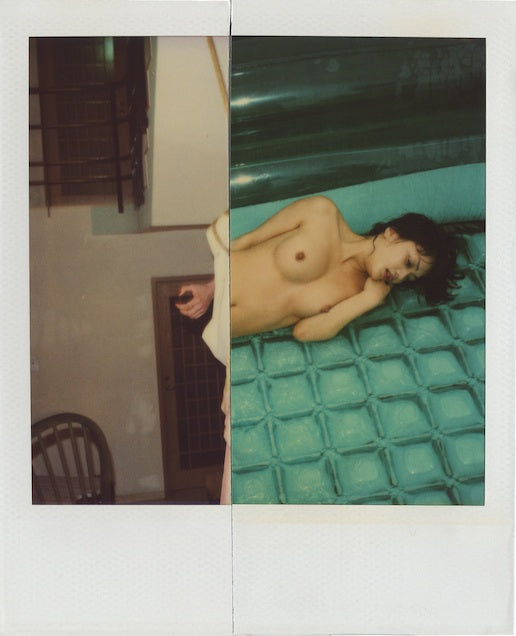
NOBUYOSHI ARAKI – POLANOGRAPHY
For this installation, Araki chose to use his photographs as a raw material. By slicing Polaroids in the center and then reassembling them, he has created a series of new, hybrid images that build on the central themes of Eros and anatos (death) that run throughout his work. e resulting images explore the female form in surprising ways, combining both bodies and perspectives.
As with many of his series, « Polanography » illustrates Araki’s fondness for wordplay. e title is a contraction of « Polaroid » and « pornography », a construction which is phonetically very similar to the pronunciation of the word « pornography » in Japanese. Like the images themselves, Araki has invented the term « polanography » by cutting and assembling these two terms together in order to create new meaning.
« Polanography » re ects Araki’s willingness to alter his own photographs, an approach he has used in several other series in recent years, mirroring his loss of vision with partially blacked out prints in « Love on the Left Eye » or scratching the negatives of images he made after the Fukushima nuclear crisis of March 2011.
Araki’s alternate titles for this series of hybrid Polaroids, « Arakiri » and « Kekkai », further reveal the thinking behind this work and Araki’s desire to engage with tradition, from the traditional bondage practices of kinbaku to the depictions of sex and the female body in the nineteenth century erotic art of shunga.
« Arakiri », a further contraction of Araki and hara-kiri — which translates literally as cutting the belly — refers to the ritual practice of suicide by disembowelment practiced by the Japanese samurai. Whereas traditionally hara-kiri was only committed by men, with these images Araki has translated the practice to the female, centering the body not on the abdomen but on the genitals.
« Kekkai » refers to the boundary created around the grounds of Japanese Buddhist temples to separate the outside world from the sanctuary of the temple. Araki translates this idea of kekkai to the line separating the two halves of each image, accentuating the idea of two bodies, two times, or even two worlds colliding.
One of the most proli c artists working with photography today, with « Polanography » Araki reveals his willingness to continue to develop new approaches which remain profoundly rooted in Japanese traditions.
Text written by Marc Feustel
Dates : Apr.8 to Jun.25, 2016
Place : Gallery &co119, Paris